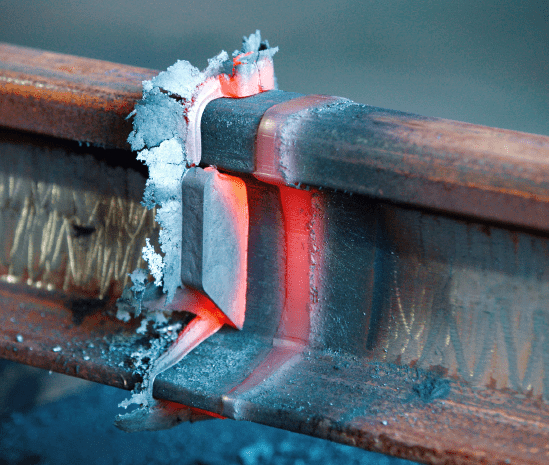Achieving Welding Quality: Revealing the Secrets of WPS Implementation and Optimization
In the world of welding, achieving quality is a search that hinges on the careful implementation and optimization of Welding Procedure Specifications (WPS) By diving into the vital elements, strategies, challenges, and finest techniques associated with WPS, a globe of welding quality waits for those that are ready to discover its midsts.
Significance of WPS in Welding
The Importance of Welding Treatment Specifications (WPS) in the welding sector can not be overstated, functioning as the foundation for making sure consistency, high quality, and security in welding procedures. A WPS provides in-depth instructions on exactly how welding is to be performed, including essential variables such as products, welding processes, joint design, filler metals, preheat and interpass temperature levels, welding currents, voltages, traveling rates, and more. By adhering to a well-defined WPS, welders can maintain uniformity in their work, leading to constant weld high quality throughout various jobs.

Crucial Element of WPS
Going over the indispensable elements of a welding treatment spec (WPS) is crucial for recognizing its role in welding operations. One important element of a WPS is the welding procedure spec, which details the particular welding procedures to be utilized, such as gas tungsten arc welding (GTAW) or shielded metal arc welding (SMAW) By incorporating these essential components right into the WPS, welding procedures can be standardized, ensuring quality, effectiveness, and safety in welding procedures.
Techniques for WPS Optimization

Second of all, training and certification of welding employees according to the specific requirements of the WPS is vital. Giving extensive training programs and guaranteeing that welders are licensed to execute treatments laid out in the WPS can lead to better welds and decreased rework.
Additionally, leveraging innovation such as welding software and surveillance systems can aid in maximizing WPS. These tools can assist in monitoring variables, guaranteeing criteria are within specified limitations, and offering real-time comments to welders, allowing them to make immediate modifications for improved weld quality.
Typical Challenges and Solutions
Dealing with obstacles in carrying out the strategies for WPS optimization can impede welding procedures' performance and high quality. One usual obstacle is poor training or understanding of the welding treatment specs (WPS) amongst the welding team. This can cause incorrect implementation of welds, resulting in problems and rework. To resolve this, detailed training programs ought to be carried out to make sure that all welders excel in using and interpreting WPS properly.
One more challenge is the lack of correct paperwork and record-keeping, which is important for WPS optimization. Without clear documents of welding parameters, products utilized, and inspection outcomes, it becomes tough to identify areas for improvement and guarantee uniformity in welding procedures. Executing a robust documentation system, such as digital welding monitoring software application, can aid streamline record-keeping and assist in data evaluation for continual improvement.
Additionally, irregular welding equipment calibration and upkeep can pose a substantial obstacle to WPS optimization. Routine tools checks, calibration, and upkeep routines need to be stuck to purely to make certain that look what i found welding criteria are properly controlled and maintained within the specified resistances (welding WPS). By dealing with these usual obstacles with proactive remedies, welding procedures can boost effectiveness, high quality, and overall welding excellence
Finest Practices for WPS Execution
To ensure successful WPS application in welding procedures, adherence to market criteria and careful focus to information are extremely important. When launching WPS implementation, it is important to start by thoroughly recognizing the specific welding demands of the job. This requires an extensive review of the welding treatment specs, products to be welded, and the environmental conditions in which the welding look these up will occur.
Once the needs are clear, the next action is to choose the suitable welding treatment that straightens with these specs. This includes consulting the appropriate codes and standards, such as those provided by the American Welding Society (AWS) or the International Organization for Standardization (ISO), to make sure conformity and high quality.
Furthermore, documenting the entire WPS application process is crucial for traceability and top quality control. Thorough records must be maintained regarding welding criteria, product preparation, preheat and interpass temperature levels, welding consumables used, and any kind of variances from the initial treatment. Normal audits and evaluations of the WPS can assist identify locations for enhancement and ensure ongoing optimization of the welding procedure.


Conclusion
To conclude, the application and optimization of Welding Treatment Requirements (WPS) is essential for attaining welding quality. By recognizing the essential aspects of WPS, applying reliable approaches for optimization, resolving typical difficulties, and complying with best techniques, welders can make certain top quality welds and risk-free working conditions. It is read review essential for specialists in the welding market to prioritize the appropriate implementation of WPS to boost overall welding efficiency and accomplish preferred end results.
The Significance of Welding Procedure Requirements (WPS) in the welding industry can not be overstated, offering as the foundation for making sure uniformity, high quality, and safety in welding operations. A WPS provides comprehensive directions on exactly how welding is to be brought out, consisting of vital variables such as materials, welding procedures, joint design, filler steels, interpass and preheat temperatures, welding currents, voltages, traveling rates, and extra. One crucial element of a WPS is the welding process spec, which outlines the specific welding procedures to be made use of, such as gas tungsten arc welding (GTAW) or secured metal arc welding (SMAW) By integrating these key elements into the WPS, welding treatments can be standard, ensuring high quality, effectiveness, and safety in welding operations.
It is essential for professionals in the welding sector to prioritize the proper execution of WPS to boost total welding performance and accomplish wanted results.